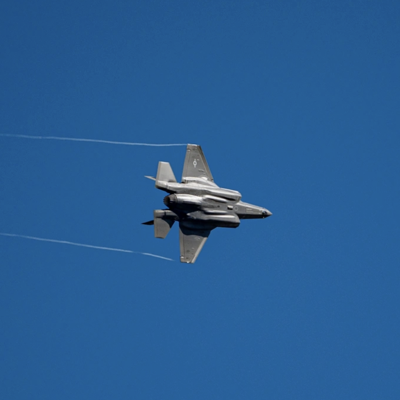The F-35 program has failed to meet a key readiness metric for six straight years, despite a steady increase in spending to operate and maintain the aircraft, according to a new report from a government watchdog agency.
The Pentagon spent more than $12 billion to operate and maintain the F-35 fleet from fiscal 2018 to 2023, according to the GAO.
But the three F-35 variants were not alone. Seven of the Pentagon’s other tactical aircraft programs also failed to meet mission-capable goals for six years straight, and the other five programs missed the target three to five of the last six years. The mission capable rate is the percentage of time during which the aircraft can fly and perform at least one of its tasked missions.
“None of the 15 tactical aircraft variants met their mission-capable goals in fiscal year 2023. Only two—the F-15C and the F-16C—met their annual goals in at least half of the years since fiscal year 2018,” the GAO said.
The F-35 Joint Program Office launched an effort last year to fix the aircraft’s poor mission capable rates, called the “War on Readiness.” The program’s goal was to increase the fleetwide F-35 mission capable rate by 10 percent by the end of March 2024. However, officials said readiness only rose 2.6 percent within that year, up to 55.7 percent.
“We’re not where we need to be on our mission-capable rates, but we have put the elements, I think, into the system that has shown us a path of how we can get there,” Lt. Gen. Michael Schmidt, F-35 program executive officer, told reporters last month.
Of the 40 previous “top degraders” of readiness, 21 are no longer at the top, Schmidt said in September. But two main problems are still dragging down F-35 readiness, officials say. JPO won’t disclose what those two problems are, but Schmidt told Congress in April that if the program can overcome them, the fleetwide mission capable rate would increase to more than 70 percent.
The F-35 has long had a rash of sustainment problems, including delays in depot maintenance, spare parts shortages, heavy reliance on contractors, and lack of access to technical data for repairs.
Lockheed Martin currently leads and manages sustainment, but that has left the Pentagon with “limited decision-making ability and influence over depot maintenance,” GAO has said. The company will have to relinquish some control over sustainment in the coming years, after lawmakers in the 2022 National Defense Authorization Act formally required the military services to take over management of F-35 sustainment by 2027.
The total cost of operating and maintaining the triservice jet is expected to surpass $1.5 trillion, according to GAO. From start to finish, the F-35 program is estimated to reach a total cost of $2 trillion.
Read the full article here


:quality(70)/cloudfront-us-east-1.images.arcpublishing.com/archetype/G3UBSHOXHBEZVDWZLKM5HU2OUE.jpg)




Leave a Reply